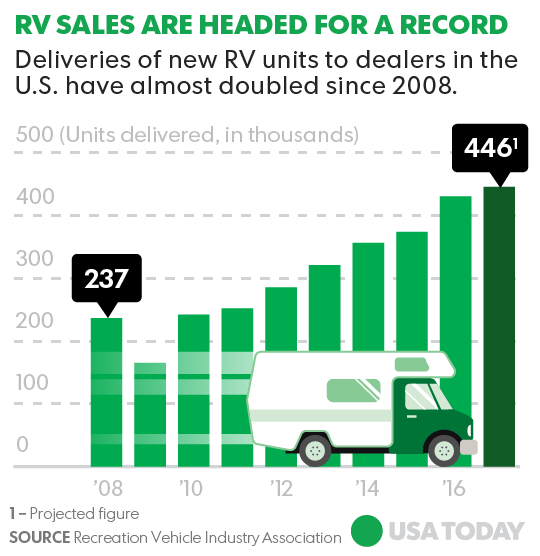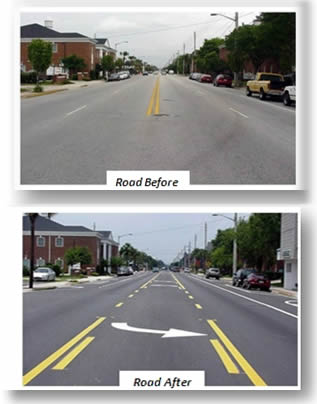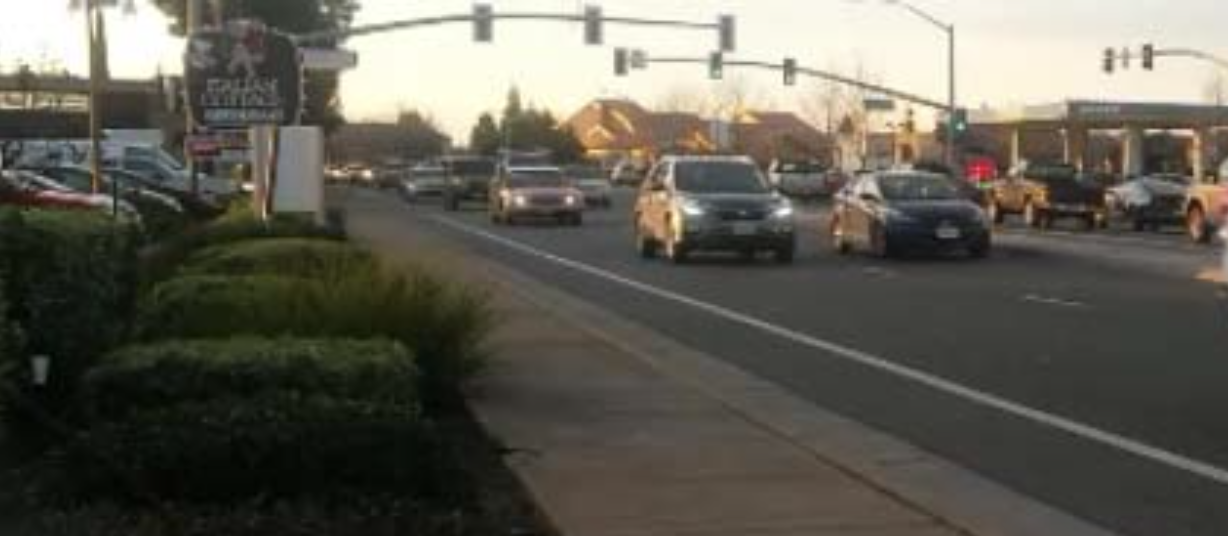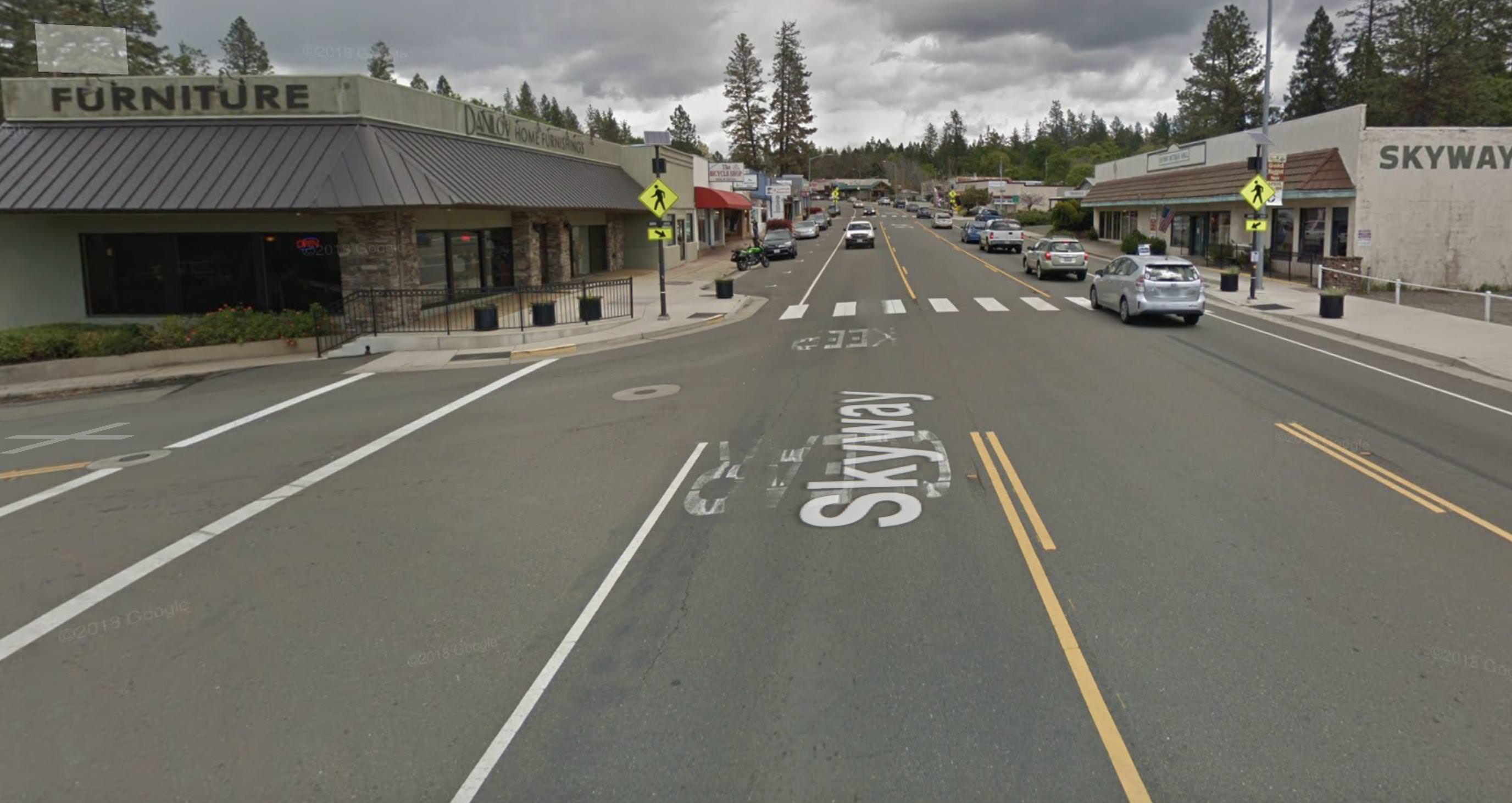The car, the penultimate symbol of personal freedom in America. Or is it? This Baby Boomer provides an amusingly wrong analysis. Pro-tip, any lifestyle claim that’s consistent with U.N. Agenda 21 is probably not a voluntary one for most people.
US Love Affair With Cars Nearly Finished
The Wall Street Journal has an interesting article that strikes right at the heart of the auto industry: Driving? The Kids Are So Over It.
The linked article is paywalled so I skipped the link. This excerpt will suffice:
About a quarter of 16-year-olds had a driver’s license in 2017, a sharp decline from nearly half in 1983, according to an analysis of licensing data by transportation researcher Michael Sivak.
Whereas a driver’s license once was a symbol of freedom, teenagers are reaching their driving age at a time when most have access to ride-hailing services such as Uber and Lyft to shuttle them around town. At the same time, social media and video chat let them hang out with friends without actually leaving the house. When they reach their 20s, more are moving to big cities with mass transit, where owning a car is neither necessary nor practical. And of those who do buy a car, many more than in older generations opt for a used one, according to J.D. Power.
A new mind-set among many Generation Zers.roughly those born after 1997.is confounding parents and stumping auto makers at a time when new-vehicle sales in the U.S. are slowing. J.D. Power estimates that Gen Zers will purchase about 120,000 fewer new vehicles this year compared with millennials in 2004, when they were the new generation of drivers.or 488,198 vehicles versus 607,329 then.
.That freedom of getting your own wheels and a license.and that being the most important thing in life.is gone,. said Brent Wall, owner of All Star Driver Education in Michigan, a chain of drivers.-ed schools. He said the average age of students in his class is rising. .It used to be the day they turned 14 years and eight months, everybody was lining up at the door. Now I’m starting to see more 15- and 16-year-olds in class.” He frequently hears from parents that they’re the ones pushing their children to enroll.
End linked article quote. This is well-answered by a subsequent graph from J.D. Power. The relevant bit:
Share of drivers buying used cars by generation (2018):
41% Boomer
47% Gen X
51% Gen Y
63% Gen Z
At first glance, that’s alarming. But remember this is a breakdown by age. The wealthiest demographic is always the oldest demographic. (Implication, our political problem is not female voters but pensioned voters.) Although I don’t doubt that young people are having trouble affording cars… student debt alone guarantees trouble with that.
Cost vs Convenience
Cost is an issue. Detroit is busy churning out SUVs that cost well over $30,000. The cost of insurance is rising.
One can forgo a car but not a place to live. Housing costs have risen far more than the stated rate of inflation.
Actually, the reverse is true. Men are known to live out of their cars. Were I to advise a young man on career choice, RV mechanic is looking very good right now.
I expect to end up in an RV myself. Partly because of artificially inflated rents, partly because of natural wanderlust, partly so I can pull a Lot Out Of Sodom as needed and partly because new home building has been outlawed along with fun and oxygen.
Death of the SUV
So who has been buying all those large SUVs? Retiring boomers and those flush with assets from the latest Fed-sponsored bubble.
Also, anybody living on roads maintained by politicians who think too many people own cars. In California, they call it a “road diet”: if the roads get bad enough then nobody will want to drive on them. Nothing could possibly go wrong with intentionally allowing critical infrastructure to deteriorate, right? More on this later.
Boomers won’t live forever. Nor will the stock market bubble. And just around the corner are fleets of driverless cars and a wave of new services around those cars.
The insurance liability of driverless cars alone is sufficient to ensure they never catch on. It’s a persistent setback on the road to world domination, the globalists’ inability to get rid of all those unsexy male commercial drivers.
Attitudes
At the heart of this shift is huge change in attitude about cars and housing coupled with amazing technological advances.
Attitude change: Car = House. Again, I see RVs cropping up all over. Here’s a couple graphs:

Remember what happened in 2009-2010? The housing bubble.

Millennials and Generation Z saw what happened in the the Great Financial crisis and the first few years of the rebound. They saw their parents arguing over debt in fear of losing their house. They do not want to fall into the same trap.
Yes. Absolutely. We saw how land ownership could become a deathtrap and are increasingly opting for housing solutions that don’t come with a million strings attached. The worst that can happen with an RV is you lose your home… we remember the poor sods who couldn’t afford to lose their home. Never mind all the legal mandates attached to property transfers.
One guy I know, he recently wanted to add a detached unit to a rural house property he owned. One of the permit costs was a $30k grant to the school district… for adding a granny unit to his home in the boonies.
Most importantly, especially if you buy used, you can OWN an RV. It’s not much of a home but it’s YOUR home, by thunder. And you can take it across state lines faster than the gov’t can tax it.
That’s huge.
We boomers…
This explains a lot about his mis-analysis.
…did not have social media outlets when we were in high school and college. Nor did we have cell phones. If you wanted to do something you had to drive or get your parents to take you.
I spent countless hours as a high-schooler, even on weekdays, just driving around going nowhere. Gas was 20 cents a gallon.
Thank God that kind of boredom is gone. Yes, driving for entertainment has lost its luster for most people. Especially me after I nearly killed myself rubber-necking on Highway 1 in Big Sur. Gorgeous place to die. Many have.
The Future
The auto industry will soon not look like what it does today. Cars will be smaller, lighter, electric, and self-driving. Boomers will be gone. Those living in big cities will not need to own a car at all, and most won’t.
Cars will be homes on wheels, with cash-strapped working poor migrating between job opportunities and rents priced like commodities. The Boomers intend to enslave us into corporate enclaves of soullessly efficient economics but we still want our freedom. Real freedom, not the “driving around going nowhere at 20 cents a gallon” freedom.
Yeah, that DOES explain a lot about the Boomer concept of freedom.
Bullshit that people in cities won’t need cars. I’ve actually done the “commute to work on your bicycle” thing and let me tell you, half an hour of biking on rolling hills and a just-eaten breakfast until you’re already sweaty at 8am is not as much fun as it sounds. Oh look, there’s rain in the forecast!
Anybody who thinks mass transit is the answer to individualized travel needs should be forced to wear only one size of clothing, the size worn by the mayor of San Francisco. Currently, London Breed, as fat as her name suggests.
Boomers are the primary force keeping the current auto trends alive. Demographically-speaking, it won’t last.
So long as roads are the dominant form of long-distance travel infrastructure, people will continue using cars. The gov’t maintains the infrastructure, from roads to rails to canals, and the people make use of it. That’s the pattern everywhere.
If the Left were serious about centralizing the population then it would start replacing freeways with railroads, which are much easier to control and automate. A few of them have tried, mostly the True Believers in Climate Change, but the truth is that Leftists are parasites. They can’t build new infrastructure. They can only cannibalize existing infrastructure or skim money off funds for new infrastructure. Thus, they want driverless cars that their R&D monkeys can (theoretically) code in a weekend.
Expect massive change within a decade, on multiple fronts, including outright ownership.
Mike “Mish” Shedlock
Expect the Boomers to not have a clue about the future.
Let me end with a discussion on road diets. Officially, it’s reworking a street for safety purposes:
https://safety.fhwa.dot.gov/road_diets/
A roadway reconfiguration known as a Road Diet offers several high-value improvements at a low cost when applied to traditional four-lane undivided highways. In addition to low cost, the primary benefits of a Road Diet include enhanced safety, mobility and access for all road users and a “complete streets” environment to accommodate a variety of transportation modes.
“Low cost” is never a reason to do something. Merely a reason to favor one action over another.
A classic Road Diet typically involves converting an existing four-lane, undivided roadway segment to a three-lane segment consisting of two through lanes and a center, two-way left-turn lane.

I don’t object to this as a safety measure. However, notice that four lanes are now two. This is why it’s called a “road diet”, it limits the ability of cars to use roads, although you won’t see any “approved” sources admit to that.
The resulting benefits include a crash reduction of 19 to 47 percent, reduced vehicle speed differential, improved mobility and access by all road users, and integration of the roadway into surrounding uses that results in an enhanced quality of life. A key feature of a Road Diet is that it allows reclaimed space to be allocated for other uses, such as turn lanes, bus lanes, pedestrian refuge islands, bike lanes, sidewalks, bus shelters, parking or landscaping.
That reeks of centralized urban planning. “What about all the poor people who want to commute on their bicycle on a sunny day? We’re forcing them to use the sidewalk!”
Why consider a Road Diet? Four-lane undivided highways experience relatively high crash frequencies . especially as traffic volumes and turning movements increase over time . resulting in conflicts between high-speed through traffic, left-turning vehicles and other road users. FHWA has deemed Road Diets a proven safety countermeasure and promotes them as a safety-focused design alternative to a traditional four-lane, undivided roadway. Road Diet-related crash modification factors are also available for use in safety countermeasure benefit-cost analysis.
Fewer lanes is a terrible way to handle the problem of increased traffic volume. But I admit, the new congestion will reduce high-speed traffic collisions.
As more communities desire “complete streets” and more livable spaces, they look to agencies to find opportunities to better integrate pedestrian and bicycle facilities and transit options along their corridors. When a Road Diet is planned in conjunction with reconstruction or simple overlay projects, the safety and operational benefits are achieved essentially for the cost of restriping. A Road Diet is a low-cost solution that addresses safety concerns and benefits all road users . a win-win for quality of life.
Yeah, no. Those new bus lanes get special bus traffic lights, bus shelters are electrified so new wiring goes in and don’t claim those “pedestrian refuge islands” are as cheap as restriping.
These are all ways of justifying the reduction of driving to an unpleasant, if not outright difficult, chore. Instead of government trying to facilitate the way most of its members want to live, it decides on what we secretly want, usually without asking us, then forces it upon us and waits smugly for our admission that it was right to do so. Dissent punished by deplatforming.
Also, consequences punished by silence. Consequences like the Paradise fire. Via wikipedia:
https://mayorsam.blogspot.com/2018/11/mayor-sam-exclusive-deadly-consequences.html
As the Humboldt Fire ravaged Butte County in 2008 evacuations out of the communities of Paradise and Magalia bogged down in gridlock. Fleeing residents were trapped in their cars, flames boiling on both sides of the road. Many fled on foot, barely escaping with their lives. …
After the 2008 fire a grand jury investigation identified serious constraints on the region’s evacuation routes. Their final report noted there are only four roads of escape for 40,000 people in Paradise, Magalia, and Upper Ridge, three of which are narrow, two lane mountain roads. Those roads have “significant constraints limiting their use as evacuation routes during a major event, especially another event of multiple fires..
The only major route out of the area is Skyway Boulevard, a state highway that connects the mountain communities with the city of Chico. The grand jury recommended, .immediate modification of Skyway, from Paradise to Chico, as an emergency evacuation route, by removing trees and brush and creating fire barriers on both sides of the road..
Instead, in 2012 the county decided to narrow Skyway. It removed traffic lanes and installed bike lanes, bulb-outs, and other traffic calming measures throughout Paradise. …


This is how ideology defeats common sense and costs lives. For the grand jury’s report was prophetic: The lack of adequate shoulder space to park disabled or abandoned cars contributed [to] gridlock so severe that people abandoned their cars by the thousands and fled on foot. Many of them didn’t make it.
According to Paradise resident Chuck Kessler, the narrowed roads contributed to the horrific gridlock that turned the evacuation into a death march. And Paradise evacuee Jennifer Morris said it took her and her two children more than five hours to escape. Similar stories abound in evacuation centers.
The same scene played out in Los Angeles last year. In the summer of 2017 the city installed a road diet on Foothill Boulevard, which is the main evacuation route for Shadow Hills and Sunland Tujunga in north L.A. The highway is particularly critical due to the area’s geography…
The halving of capacity on Foothill bottlenecked a critical intersection with Sunland Boulevard, severely impeding evacuations during the 2017 La Tuna Fire. [A] resident says that thanks in large part to the road diet, for several critical hours Foothill Boulevard became “virtually impassable, both for rescue equipment and evacuees.” She said that at one point the police department resorted to sending motorcycles into neighborhoods, because “they could drive on the sidewalks..
For disaster preparation, the danger to “bug out” plans are obvious. Part and parcel of intentional population demobilization.
The dangers of road diets are not limited to massive emergencies. Throughout Los Angeles emergency responders routinely bog down on newly narrowed streets. A senior official with the Los Angeles Fire Department, speaking on condition of anonymity, said, .Taking away lanes, and drivers. ability to pull right, impedes emergency response. We all have gripes.removing lanes has added another detriment in responding to emergencies at times..
So much for road diets being about safety.
Cars are an important part of modern life and the freedom to travel, obviously of value to we who live on the outskirts of society. The use of cars is indeed changing, from Boomer attitudes of casually meaningless freedom to MGTOWs wisely choosing alternative forms of housing to totalitarian Nanny Staters hiding the evidence of how their Utopian plans are, once again, getting innocents killed.